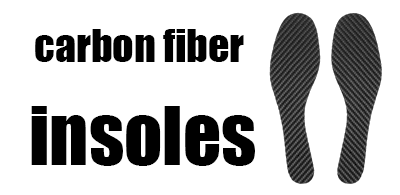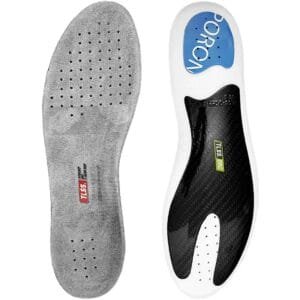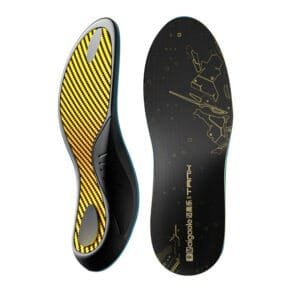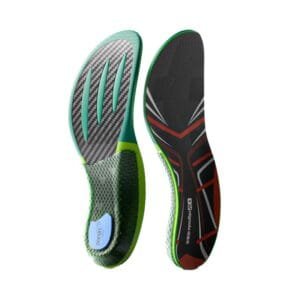Foot pain caused by conditions like arthritic toe, hallux rigidus, turf toe, and Morton’s toe can severely impact mobility and quality of life. Traditional insoles often lack the necessary support, leading many to seek advanced solutions like carbon fiber insoles. These rigid inserts provide unparalleled stability, pain relief, and long-term recovery benefits.
In this article, we’ll explore how carbon fiber insoles work, their benefits for specific foot conditions, and why they outperform conventional orthotics. We’ll also answer common questions to help you decide if they’re the right choice for your needs.

What Are Carbon Fiber Insoles?
Carbon fiber insoles are ultra-thin, rigid foot supports designed to limit excessive motion, reduce strain on joints, and improve biomechanical alignment. Unlike soft cushioned insoles, they use high-strength carbon fiber to provide a stiff yet lightweight structure, making them ideal for:
Hallux Rigidus (Stiff Big Toe) – Prevents painful toe bending.
Arthritic Toe Joints – Reduces pressure on inflamed joints.
Turf Toe & Sports Injuries – Enhances stability during movement.
Morton’s Toe (Long Second Toe) – Corrects gait imbalances.
General Foot Fatigue – Improves energy return with each step.
Their non-flexible design ensures maximum support, making them a favorite among athletes, arthritis sufferers, and those recovering from foot injuries.
5 Key Benefits of Carbon Fiber Insoles for Pain Relief
1. Rigid Support for Hallux Rigidus & Arthritic Toes
Hallux rigidus (a degenerative big toe joint condition) and arthritis cause stiffness and pain when walking. Soft insoles often fail to restrict motion, worsening discomfort.
How carbon fiber helps:
Prevents excessive toe bending, reducing joint stress.
Distributes weight evenly, minimizing pressure points.
Enhances push-off efficiency, making walking less painful.
2. Improved Stability for Turf Toe & Sports Injuries
Turf toe (a sprain of the big toe ligament) is common in athletes. Flexible insoles can aggravate the injury by allowing too much movement.
Why carbon fiber works better:
Limits hyperextension, protecting the toe during running or jumping.
Maintains proper alignment, preventing further strain.
Lightweight yet strong, ideal for active individuals.
3. Relief for Morton’s Toe & Metatarsal Pain
Morton’s toe (where the second toe is longer than the big toe) can lead to metatarsalgia (ball-of-foot pain). Traditional insoles may not provide enough rigidity to correct gait issues.
Carbon fiber benefits:
Reduces forefoot pressure, alleviating pain.
Encourages a natural stride, preventing overpronation.
Thin design fits in most shoes without bulkiness.
4. Long-Lasting Durability & Comfort
Unlike foam or gel insoles that compress over time, carbon fiber retains its shape indefinitely. This makes them a cost-effective, long-term solution for chronic foot conditions.
5. Versatile for Everyday & Athletic Use
Whether you’re an athlete, someone with arthritis, or just seeking better foot support, carbon fiber insoles adapt to various activities:
Running & Sports – Enhances performance with rigid propulsion.
Work & Standing All Day – Reduces fatigue by improving posture.
Post-Surgery Recovery – Provides controlled motion for healing.
-
$159.00Original price was: $159.00.$93.99Current price is: $93.99. -
$134.00Original price was: $134.00.$89.99Current price is: $89.99.




